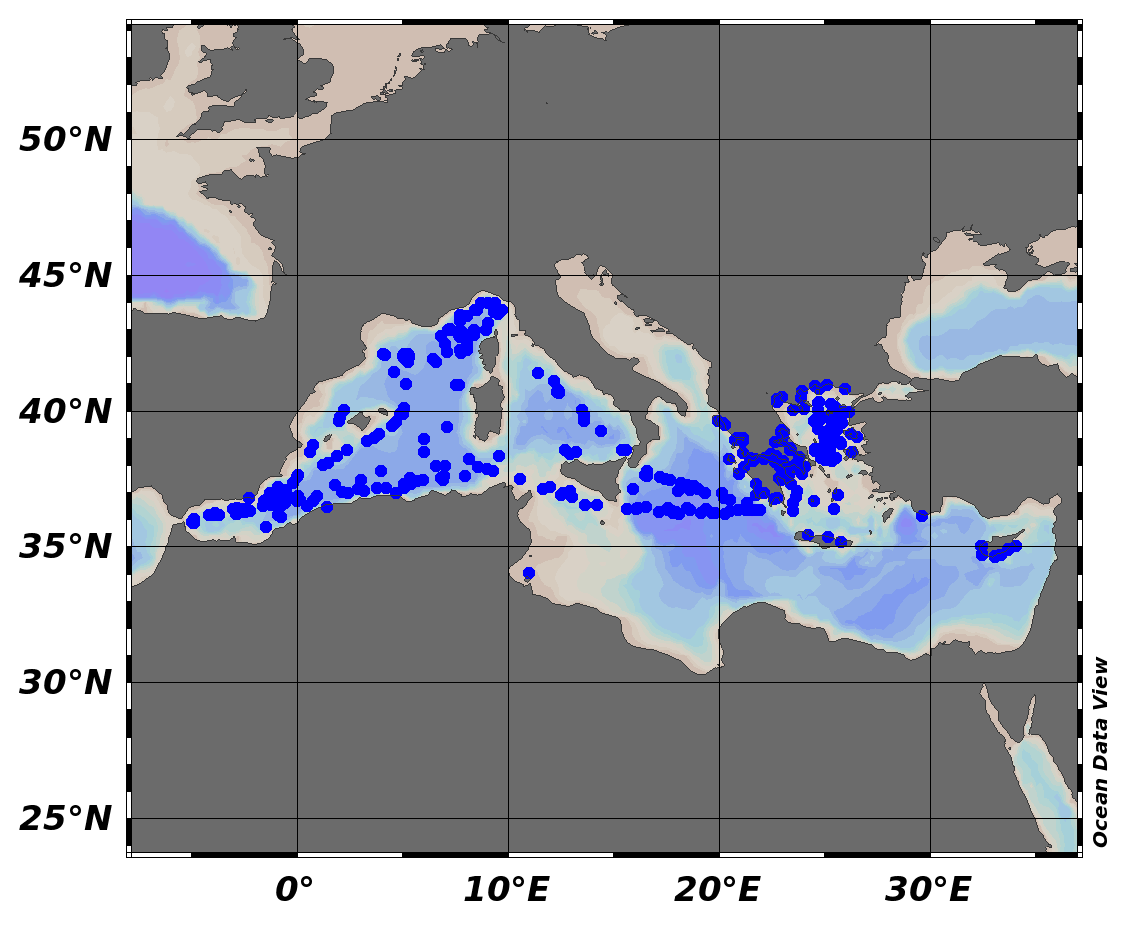Concentration of other organic contaminants in biota
Type of resources
Available actions
Topics
Keywords
Contact for the resource
Provided by
Years
Formats
Representation types
-

EMODnet Chemistry aims to provide access to marine chemistry data sets and derived data products concerning eutrophication, ocean acidification and contaminants. The chemicals chosen reflect importance to the Marine Strategy Framework Directive (MSFD). This regional aggregated dataset contains all unrestricted EMODnet Chemistry data on contaminants (24 parameters), and covers the Mediterranean Sea with 4517 CDI records divided per matrices: 520 biota profiles, 560 water profiles, 3437 sediment (26 Vertical profiles and 3411 Time series). In the water dataset, the vertical profiles temporal range is from 1974-09-12 to 2015-09-14. In sediment dataset, vertical profiles temporal range is from 2010-08-02 to 2014-09-28 and time series temporal range is from 1981-06-27 to 2018-08-02. In biota time series temporal range is from 1979-03-29 to 2017-03-15. Data were aggregated and quality controlled by ‘Hellenic Centre for Marine Research, Hellenic National Oceanographic Data Centre (HCMR/HNODC)’ from Greece. Regional datasets concerning contaminants are automatically harvested. Parameter names in these datasets are based on P01, BODC Parameter Usage Vocabulary, which is available at: http://seadatanet.maris2.nl/bandit/browse_step.php . Each measurement value has a quality flag indicator. The resulting data collections for each Sea Basin are harmonised, and the collections are quality controlled by EMODnet Chemistry Regional Leaders using ODV Software and following a common methodology for all Sea Regions. Harmonisation means that: (1) unit conversion is carried out to express contaminant concentrations with a limited set of measurement units (according to EU directives 2013/39/UE; Comm. Dec. EU 2017/848) and (2) merging of variables described by different “local names” ,but corresponding exactly to the same concepts in BODC P01 vocabulary. The harmonised dataset can be downloaded as ODV spreadsheet (TXT file), which is composed of metadata header followed by tab separated values. This worksheet can be imported to ODV Software for visualisation (More information can be found at: https://www.seadatanet.org/Software/ODV ). The same dataset is offered also as XLSX file in a long/vertical format, in which each P01 measurement is a record line. Additionally, there are a series of columns that split P01 terms in subcomponents (measure, substance, CAS number, matrix...).This transposed format is more adapted to worksheet applications users (e.g. LibreOffice Calc). The 24 parameter names in this metadata record are based on P02, SeaDataNet Parameter Discovery Vocabulary, which is available at: http://seadatanet.maris2.nl/v_bodc_vocab_v2/vocab_relations.asp?lib=P02 . Detailed documentation will be published soon. The original datasets can be searched and downloaded from EMODnet Chemistry Download Service: https://emodnet-chemistry.maris.nl/search
-
The dataset contains the results of the monitoring activity in distinct years in Slovenian coastal waters related to contaminants in Sea water, sediments and biota.
-
The dataset contains the results of the monitoring activity in distinct years in Slovenian coastal waters related to contaminants in sediments and biota.
-
The dataset contains the results of the monitoring activity in distinct years in Slovenian coastal waters related to contaminants in biota.
-
This dataset gathers isotopic ratios (carbon and nitrogen) and concentrations of both priority (mercury species and polychlorinated biphenyls congeners) and emerging (musks and sunscreens) micropollutants measured in a host-parasite couple (hake Merluccius merluccius muscle and in its parasite Anisakis sp) from the south of Bay of Biscay in 2018. In addition, the hake infection degree measured as the number of Anisakis sp. larvae was added for each hake collected. Important Note: This submission has been initially submitted to SEA scieNtific Open data Edition (SEANOE) publication service and received the recorded DOI. The metadata elements have been further processed (refined) in EMODnet Ingestion Service in order to conform with the Data Submission Service specifications.
-
The MYTIAD project focused on the assessment of chemical contamination (metals, PAHs, PCBs and organochlorine pesticides) in the Adriatic coastal waters by active mussel watching. Its purpose was harmonising and standardising strategies and methodologies used to assess the contamination status of the Adriatic Sea, in the framework of the WFD, the MSFD and UNEP/MAP Integrated Monitoring and Assessment Programme. Data on metals pointed out some hotspots along the eastern and western Adriatic Sea coasts, with the highest values of total PAH concentration detected in Split, Trieste, and Taranto (Ionian Sea). PCB and endrin contamination was higher in the Adriatic Sea than in the western Mediterranean Sea. This is the first comprehensive overview of contamination in the Adriatic Sea with critical comparisons of related studies over the Mediterranean Sea. It provides a useful harmonised dataset to support a coordinated definition of baselines, targets and thresholds, and further management of chemical contamination. Important Note: This submission has been initially submitted to SEA scieNtific Open data Edition (SEANOE) publication service and received the recorded DOI. The metadata elements have been further processed (refined) in EMODnet Ingestion Service in order to conform with the Data Submission Service specifications.
-
Objectives: National water quality monitoring Area: Slovenian sea Attributes: Contaminant concentrations Data sources: ARSO Legal references: Directive 2000/60/EC (WFD), Directive 2008/56/EC (MSFD), Directive 2013/39/EC (EQS-directive) Importance of the work: National level
-
The survey was conducted at 26 stations in the coastal waters of the Maltese Islands. The pollutant levels were measured during a pilot survey and then once (in two replicates) over the period between 30th May 2012 and 7th August 2012. During the surveys, samples of P. oceanica were collected from representative areas along the Maltese coast, and shipped to a laboratory in Italy for analysis according to the following procedures: UNI EN 15763:2010 (for Mercury); UNI EN 15662:2009 (for Hexachlorobenzene); EPA 5021A 2003 + EPA 8260C 2006 (for Hexachlorobutadiene). The measurements were made in connection with a monitoring survey of Maltese coastal waters. The resultant datasets generated provide the benchmark for long term monitoring programs and assessments that are required to implement EU Directives on water resources.
 EMODnet Product Catalogue
EMODnet Product Catalogue